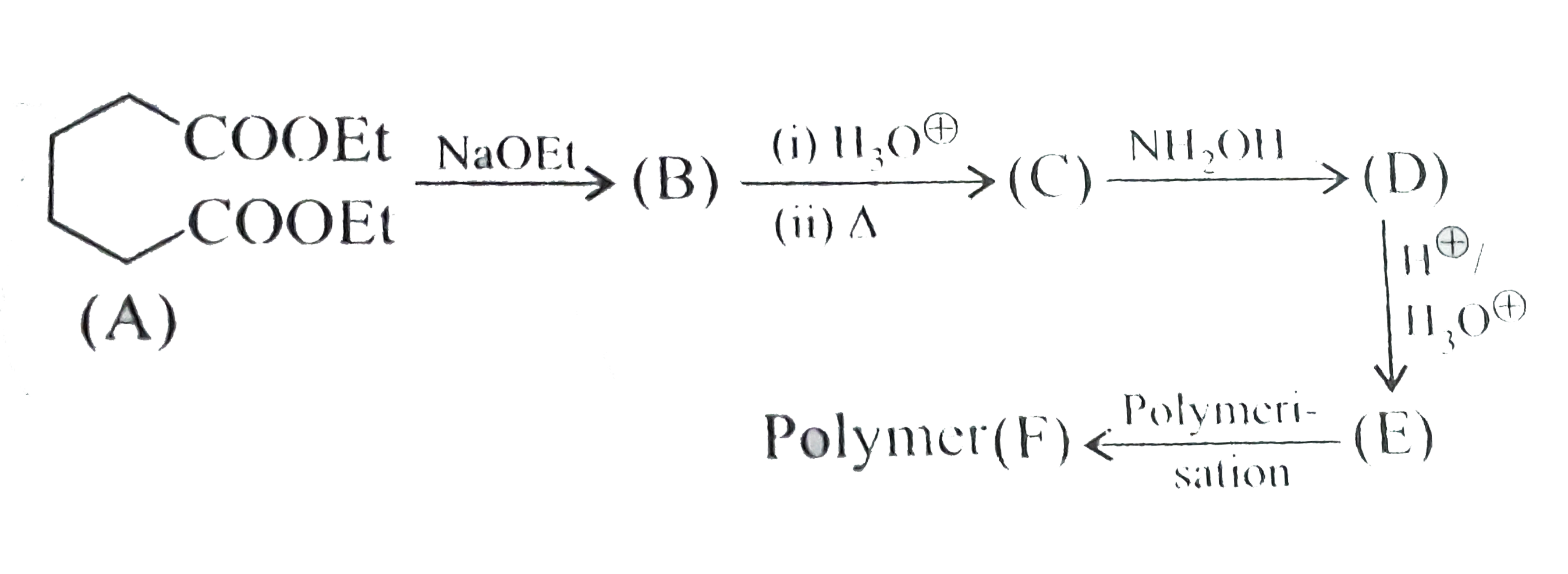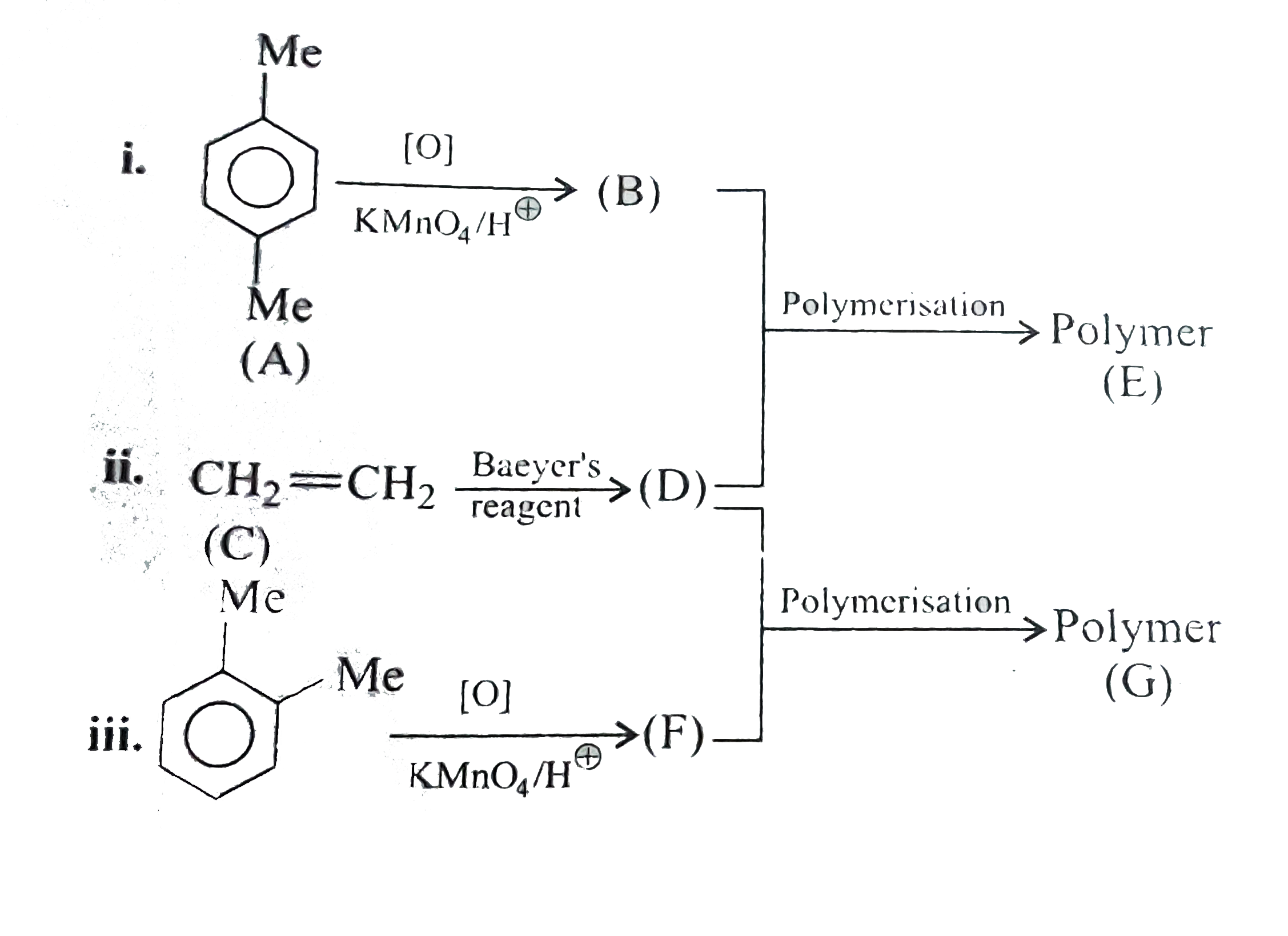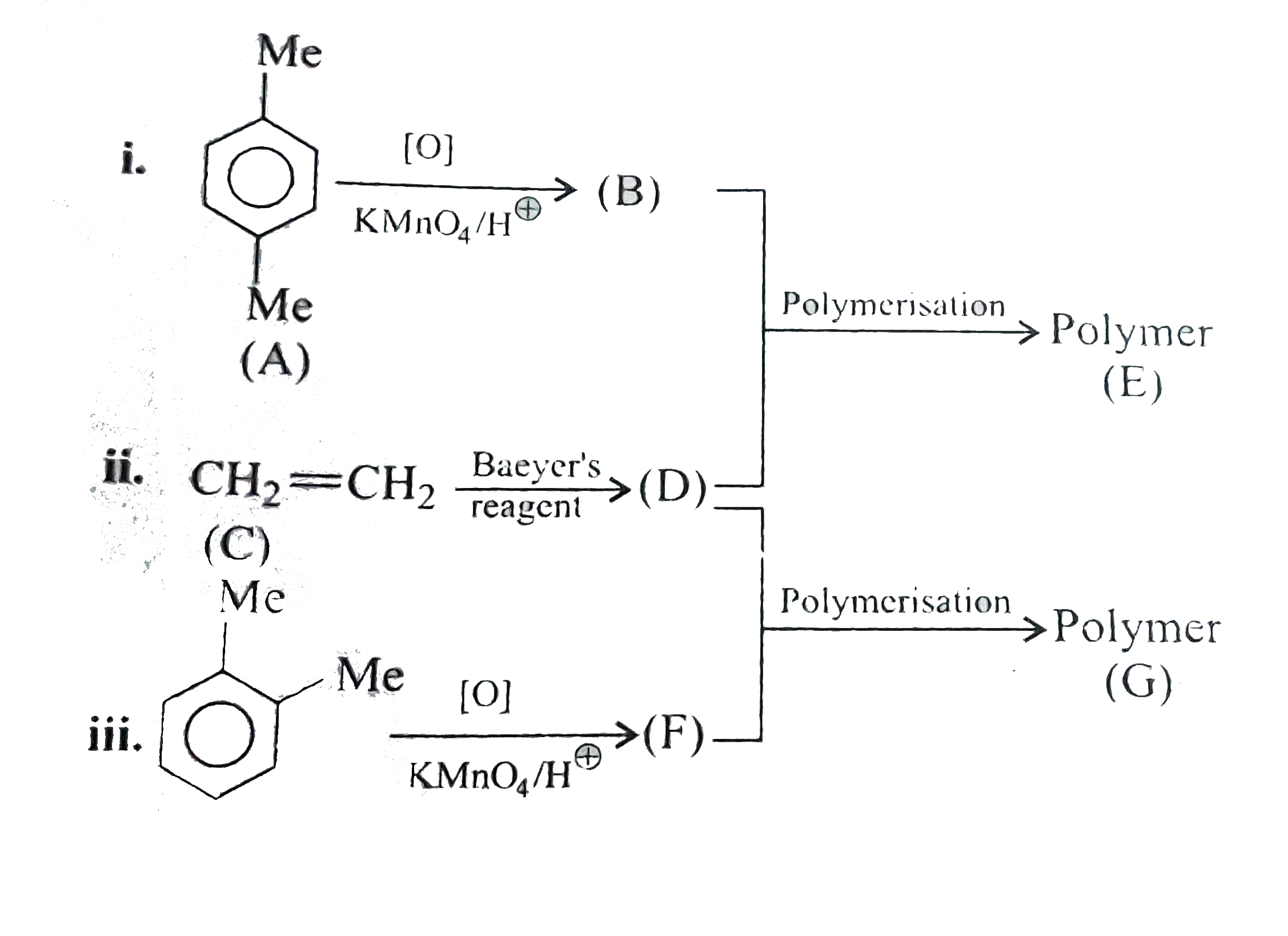Polymers are :
large organic molecules linking together repeating subunits of the same type called monomers
found in proteins, carbohydrates, and nucleic acids
due to a dehydration reaction
all of the above
The correct Answer is:D
Step-by-Step Solution:
1. Understanding Polymers:
- Polymers are large organic molecules made up of repeating subunits known as monomers. These monomers are linked together through covalent bonds to form a larger structure.
2. Identifying the Types of Polymers:
- Polymers can be found in various biological macromolecules, including proteins, carbohydrates, and nucleic acids.
- For example, proteins are polymers made from amino acid monomers.
- Nucleic acids, such as DNA and RNA, are polymers formed from nucleotide monomers.
- Carbohydrates include polymers like starch, glycogen, cellulose, and chitin, which are made from sugar monomers.
3. Dehydration Reaction:
- The formation of polymers from monomers typically occurs through a process known as a dehydration reaction.
- In this reaction, when two monomers combine, a hydrogen atom from one monomer and a hydroxyl group from another monomer react to release a water molecule. This results in the formation of a covalent bond between the two monomers, leading to the creation of a polymer.
4. Conclusion:
- Since all the statements regarding polymers are correct, the answer to the question "Polymers are:" is all of the above.
Final Answer:
All of the above
---
- Polymers are large organic molecules made up of repeating subunits known as monomers. These monomers are linked together through covalent bonds to form a larger structure.
- Polymers can be found in various biological macromolecules, including proteins, carbohydrates, and nucleic acids.
- For example, proteins are polymers made from amino acid monomers.
- Nucleic acids, such as DNA and RNA, are polymers formed from nucleotide monomers.
- Carbohydrates include polymers like starch, glycogen, cellulose, and chitin, which are made from sugar monomers.
- The formation of polymers from monomers typically occurs through a process known as a dehydration reaction.
- In this reaction, when two monomers combine, a hydrogen atom from one monomer and a hydroxyl group from another monomer react to release a water molecule. This results in the formation of a covalent bond between the two monomers, leading to the creation of a polymer.
- Since all the statements regarding polymers are correct, the answer to the question "Polymers are:" is all of the above.
All of the above
Topper's Solved these Questions
- BIOMOLECULESBOOK - ICSECHAPTER - BIOMOLECULESEXERCISE - TEST YOUR PROGRESS (FILL IN THE BLANKS WITH APPROPRIATE WORDS.)
59 Videos
- BIOMOLECULESBOOK - ICSECHAPTER - BIOMOLECULESEXERCISE - TEST YOUR PROGRESS (STATE WHETHER THE FOLLOWING STATEMENTS ARE TRUE OF FALSE.)
27 Videos
- BIOLOGY ISC SAMPLE QUESTION PAPER 2019BOOK - ICSECHAPTER - BIOLOGY ISC SAMPLE QUESTION PAPER 2019EXERCISE - PART-II (SECTION -C)
6 Videos
- BODY FLUIDS AND CIRCULATIONBOOK - ICSECHAPTER - BODY FLUIDS AND CIRCULATIONEXERCISE - DIFFRENTIATE BETWEEN
13 Videos
Similar Questions
Knowledge Check
Polymer obtained by the condensation polymerization is
ApolytheneBteflonCphenol-formaldehyde resinDnitrile rubber.
Give two differences between linear polymers and branched chain polymers.
View SolutionGive two differences between condensation polymers and addition polymers.
View SolutionWhat is biodegradable polymers? Give the names of two commercial bio-degradable polymers.
View Solution
Polymer(D)is:
View Solution
Polymer(E)is:
View Solution Polymer(G)is:
Polymer(G)is:
View SolutionIn the given polymers which is a condensation polymer.
View Solution

_2019_CBT8_E01_033_Q01.png)